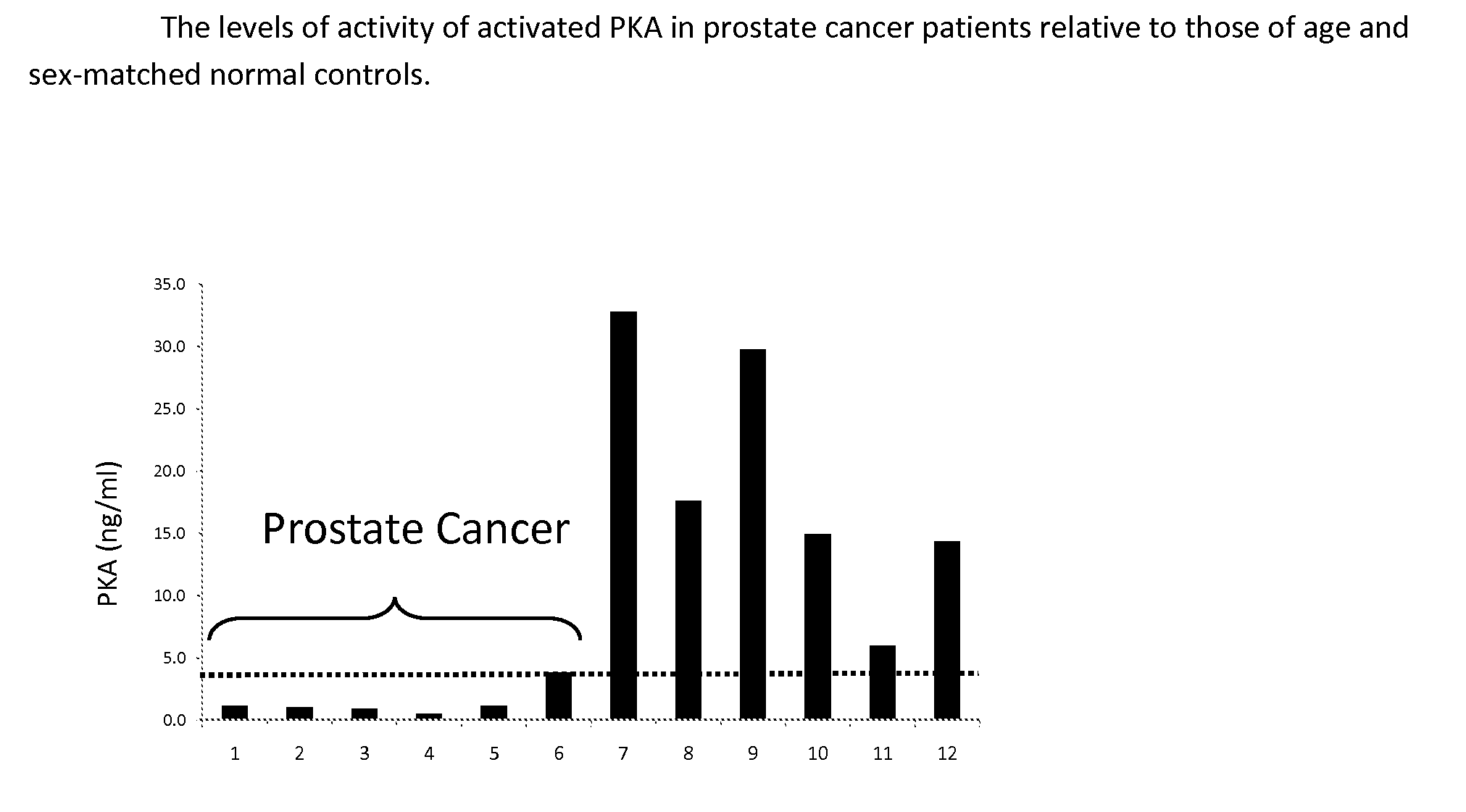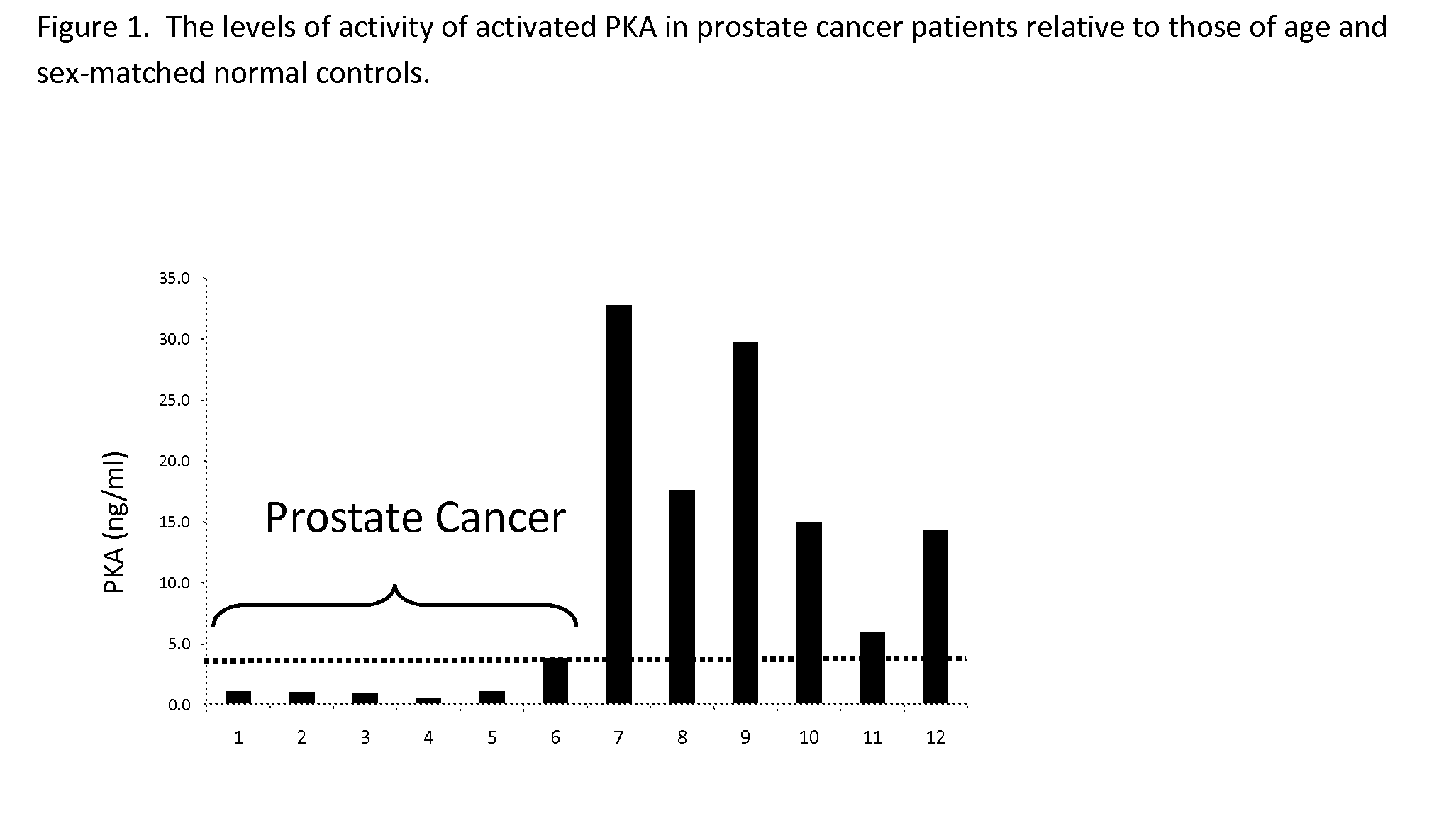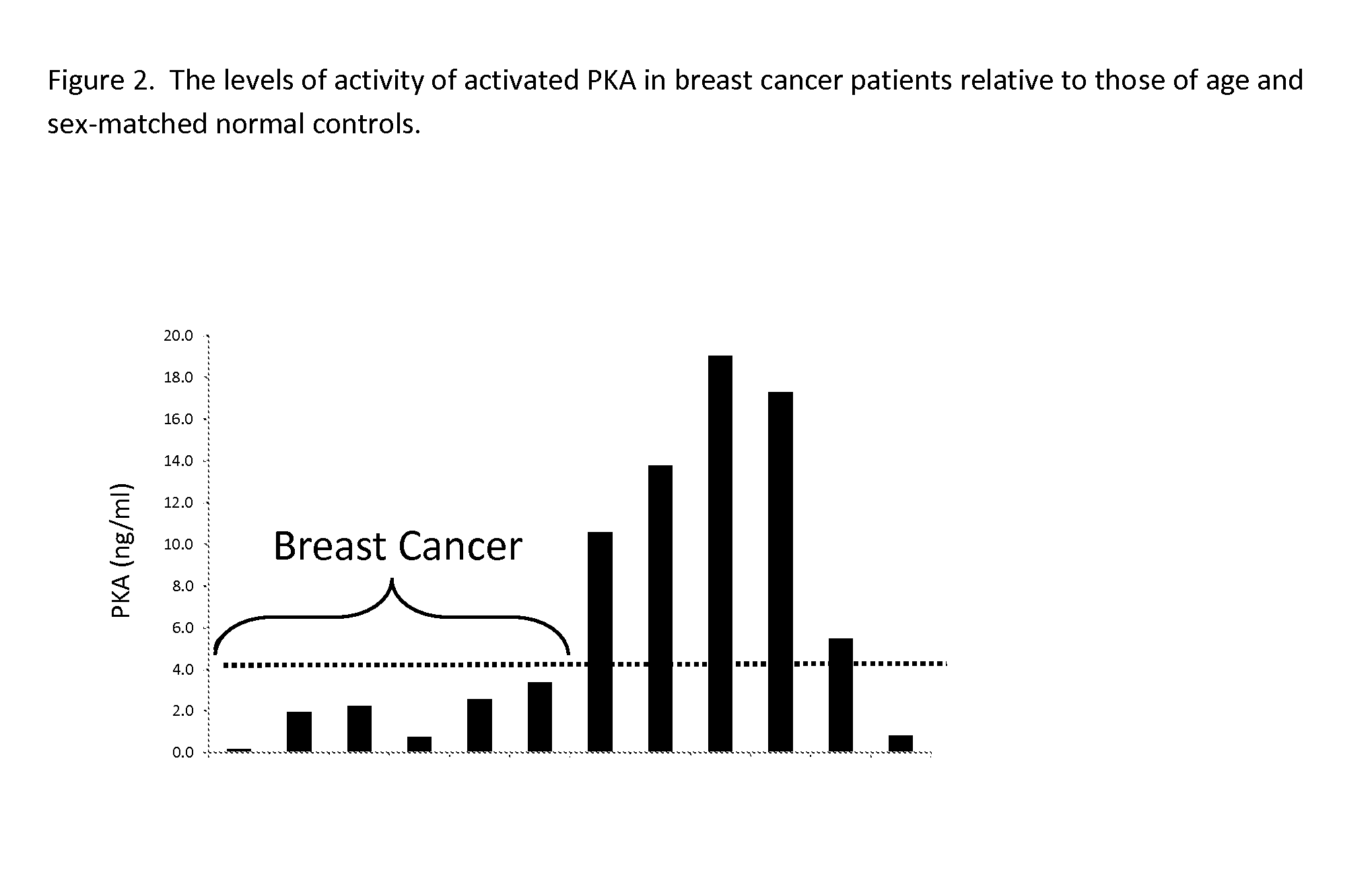Measurement of PKA for Cancer Detection
- Summary
- Abstract
- Description
- Claims
- Application Information
AI Technical Summary
Benefits of technology
Problems solved by technology
Method used
Image
Examples
embodiment 1
[0024]Serum samples from patients with early and late-stage cancer were obtained from ProMedDx, LLC. In one embodiment blood samples from prostate cancer patients and normal controls presumably without cancer were assayed for activated PKA activity. In this assay activated PKA in samples was mixed with a defined peptide used as a substrate. Phosphorylation of the peptide was detected using biotinylated phosphoserine antibody, which was in turn was detected in an ELISA format using peroxidase-conjugated to streptavidin. Detection of the bound peroxidase was established using a color-producing peroxidase substrate included in the assay kit. Bovine PKA catalytic unit was used at varying concentrations to develop a standard activity curve. The detail of the assay protocol is described below.
[0025]Modified MESACUP Protein Kinase A Activity Assay[0026]1. Reference: Kit Instructions[0027]2. Materials[0028]a. MESACUP Protein Kinase Assay Kit (MBL Code No. 5230)[0029]b. ATP: 10 mM in water[0...
embodiment 2
[0082]Blood samples from breast cancer patients and from age and sex-matched controls presumably without cancer were analyzed for activated PKA activity using the same protocol as used in Embodiment 1. The activity levels of activated PKA in blood from prostate cancer patients were lower (below 4 ng / ml) than those for samples from normal controls (FIG. 2).
embodiment 3
[0083]The same prostate cancer patient samples and related control samples used in Embodiment 1 were tested for anti-PKA antibodies as described below.
[0084]PKA Autoantibody ELISA[0085]1. Materials[0086]a. MaxiSorp 96 well polystyrene plates (NUNC Prod. No. 439454)[0087]b. PKA diluent: 25 mM KH2PO4, 5 mM EDTA, 150 mM NaCl, 50% (w / v) glycerol, 1 mg / ml BSA, 5 mM -mercaptoethanol, pH 6.5[0088]c. Protein Kinase A (Sigma Prod. No. P2645)[0089]i. Dissolve in PKA diluent and dilute to 50 g / ml[0090]ii. Store at −20° C.[0091]d. Coating buffer: 10 mM sodium phosphate, 150 mM sodium chloride, pH 7.4[0092]e. Coating wash buffer: 20 mM HEPES, 150 mM sodium chloride, 30 mM sucrose, pH 7.0 with 0.1% BSA[0093]f. Blocker Casein (Pierce Prod. No. 37532)[0094]g. Assay buffer: 10 mM sodium phosphate, 150 mM sodium chloride, pH 7.4 with 0.25% BSA and 0.1% Tween 20[0095]h. Assay wash buffer: 10 mM citrate, 150 mM sodium chloride, pH 5.1 with 0.1% Tween 20[0096]i. Detection antibody: peroxidase-conjugated...
PUM
| Property | Measurement | Unit |
|---|---|---|
| Molar density | aaaaa | aaaaa |
| Molar density | aaaaa | aaaaa |
| Molar density | aaaaa | aaaaa |
Abstract
Description
Claims
Application Information
 Login to View More
Login to View More - R&D
- Intellectual Property
- Life Sciences
- Materials
- Tech Scout
- Unparalleled Data Quality
- Higher Quality Content
- 60% Fewer Hallucinations
Browse by: Latest US Patents, China's latest patents, Technical Efficacy Thesaurus, Application Domain, Technology Topic, Popular Technical Reports.
© 2025 PatSnap. All rights reserved.Legal|Privacy policy|Modern Slavery Act Transparency Statement|Sitemap|About US| Contact US: help@patsnap.com



